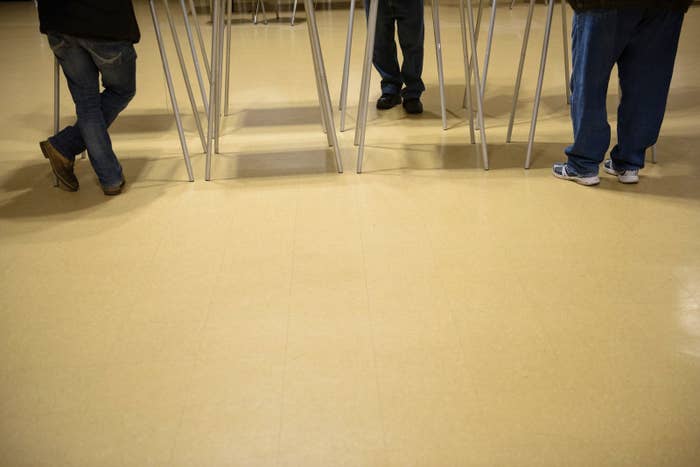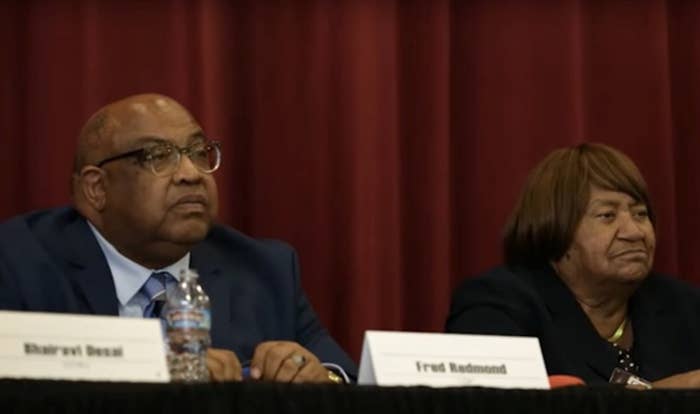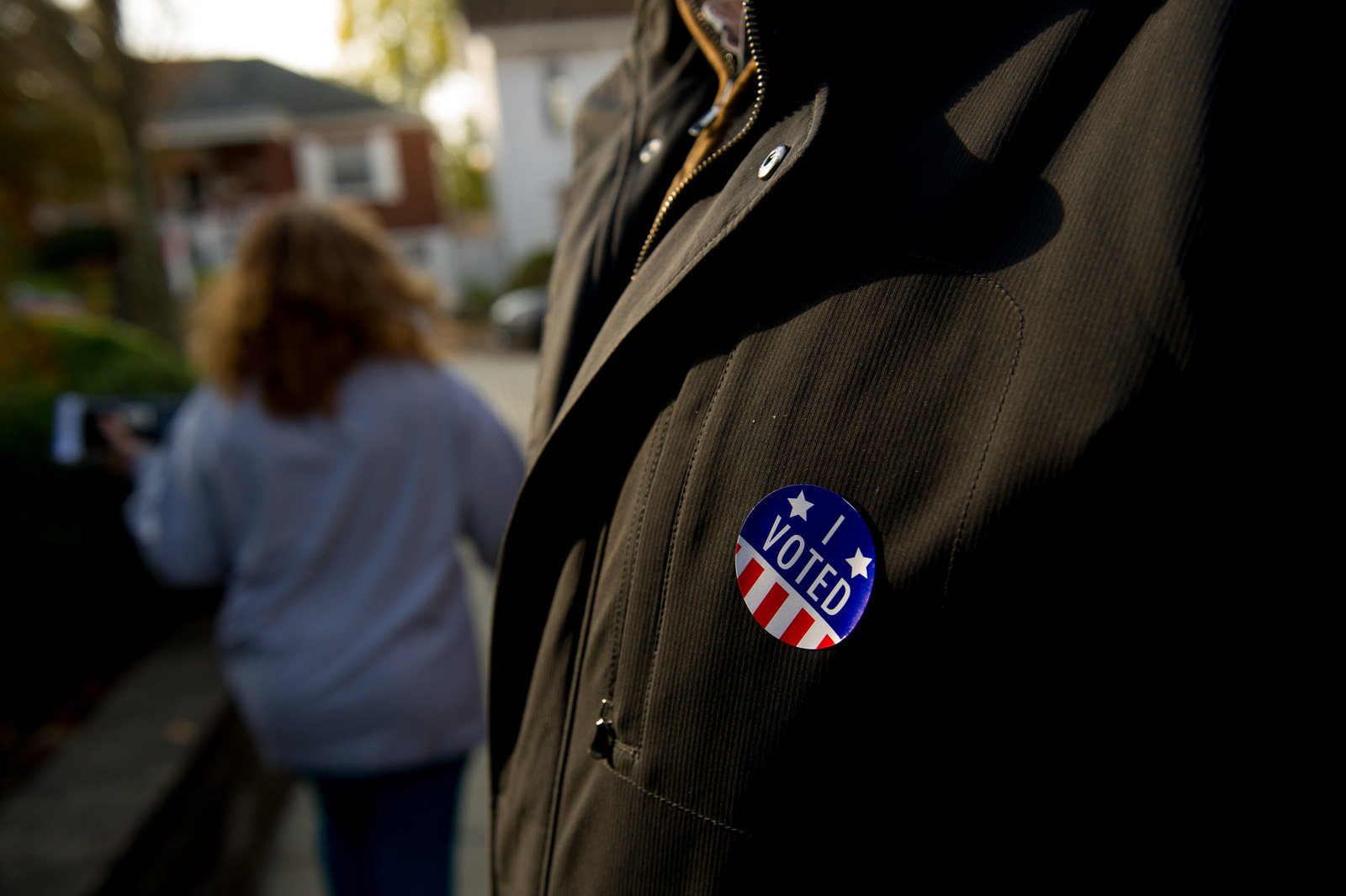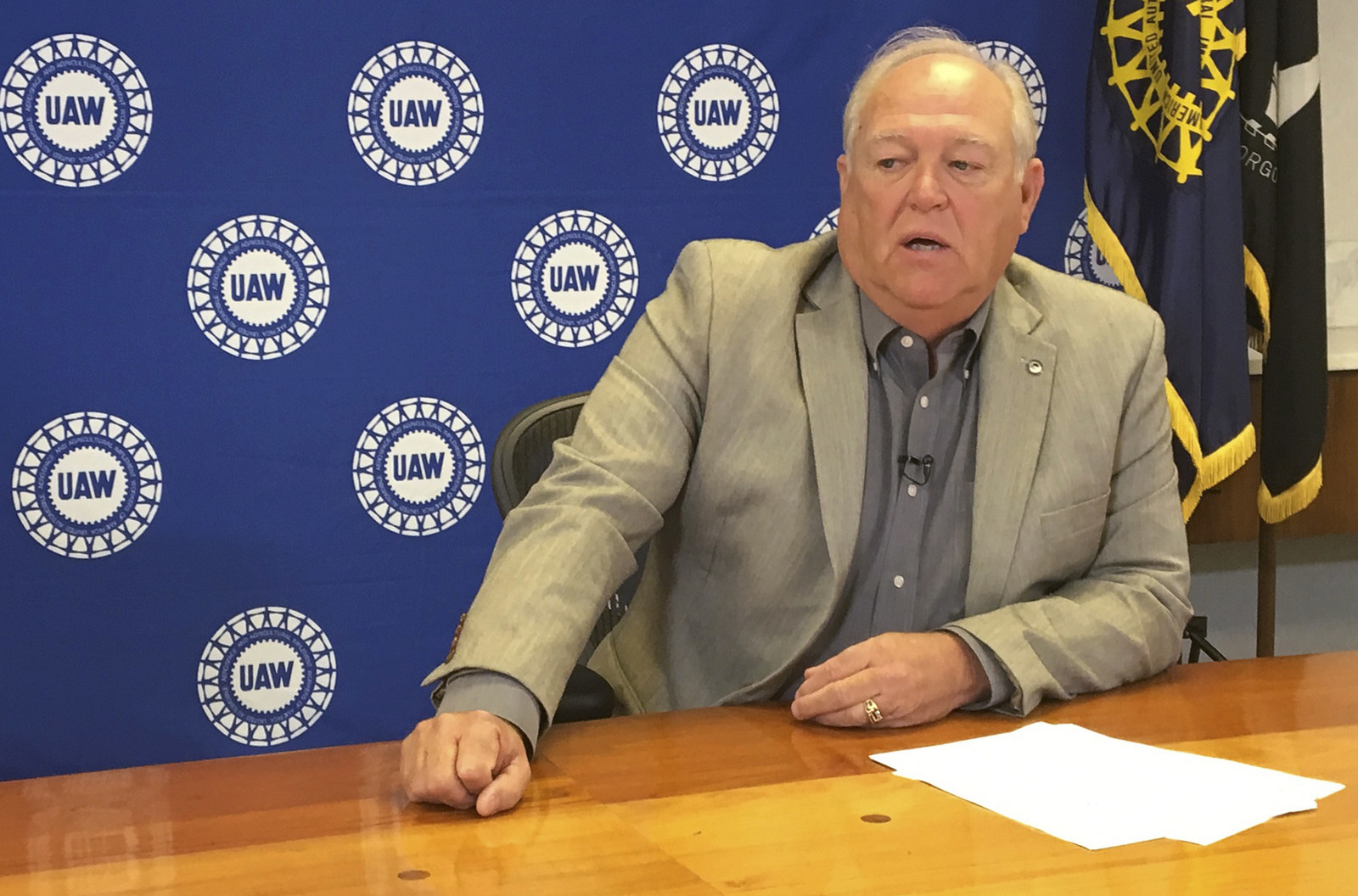
In an informal poll of union members conducted last winter, the third most popular presidential candidate was one whose name wasn’t even listed as an option. While he trailed Hillary Clinton and Bernie Sanders, Donald Trump overwhelmed all other Republican candidates in support from the working men and women polled, despite each of his supporters having to enter his name as a write-in candidate.
Also that winter, independent labor group Working America clocked similar support in a survey of working-class voters in neighborhoods outside Cleveland and Pittsburgh.
They were early signs that labor leaders had seriously underestimated Trump’s popularity among their rank-and-file, and they scrambled in the following months to talk their members down from the pro-Trump ledge with aggressive attack ads, door-knocking, and phone banks — to no avail.
According to exit polls conducted by the AFL-CIO union federation on election day, union households voted for Trump in their greatest numbers since Reagan’s election in 1984. This happened despite overall union membership becoming less white — which indicates Trump likely outperformed even Reagan in terms of white union member support. (Notably, though, voters making less than $50,000 voted in larger numbers for Clinton, complicating the narrative that a monolithic “white working-class” put Trump in office.)
Union leaders knew early on that race was playing a serious and divisive role among their membership, in part thanks to a task force they had dispatched to six cities to hold hearings on the role of racism within the labor movement.

The AFL-CIO founded the task force, called the Commission on Racial and Economic Justice, in 2015 in response to the non-indictments of police officers responsible for the deaths of Michael Brown and Freddie Gray. (Brown’s mother was a union member, as were the police officers.) Its work began before the election cycle began in earnest, though its closed-door meetings quickly focused on the campaigns as Trump’s popularity grew.
Beginning in early 2016, the commission traveled to Cleveland, Boston, Minneapolis, St. Paul, Oakland, and Birmingham, Alabama to talk about race with local union members.
“The lesson that unions ought to learn from 2016 is they need to redouble or triple efforts in this direction,” said UC Berkeley Professor Ian Haney-Lopez, the author of Dog-Whistle Politics, a book AFL-CIO President Richard Trumka made required reading for union officers in the year leading up to the election.
The challenge for labor is to promote a “conversation that links race and class,” says Haney-Lopez, who traveled the country as a member of the task force. He argues that politicians and the managerial class have effectively used race to divide working people against one another and to support policies that favor the global elite and corporations.
Haney-Lopez said the argument emerging after Clinton’s defeat is “that somehow the Democratic party lost its way by trying to focus on minorities, and it needs to recenter on issues of class, when ‘issues of class’ turn out to code as the white-working-class, the supposed basis of Trump’s victory.”
“But this consensus is dangerous because it misunderstands the central dynamic of this election, which is about how race and class are inseparable in the United States. It is not about class alone,” he said.

In each city it visited, the union’s racial justice task force followed a similar script. Hearings began with a presentation on “dog-whistle” politics, the term for the race-baiting that often takes place in election seasons and during labor policy fights.
In the presentation, Haney-Lopez and Roosevelt Institute Fellow Dorian Warren traced the strategic use of race and racially-coded language such as “welfare queen,” “inner city,” “super-predator,” and “illegal alien” by the Republican party and politicians (including Bill Clinton) through the decades, ending with a focus on Trump’s appeal to white working-class voters.
“You could see a lot of eyes being opened,” said Terry Melvin, president of the Coalition of Black Trade Unionists, who attended four of the six hearings. “In most cases it was clear to me the dialogue would not have happened at all, had the race commission not come out.”
After the lecture, the commission held sessions with local union officers in each city and talked through what-if scenarios with rank-and-filers. In one, Donald Trump comes to town and announces that he’ll use union labor to build the border wall between Mexico and the United States. In another, a young black man or woman has been killed by a police officer, and Black Lives Matter generates a list of demands for the local labor council, including a $15/hour minimum wage and firing or prosecuting the police officer responsible.
Labor leaders in the scenarios typically supported the hypothetical $15 an hour demand, according to Warren (and minimum wage raises passed in four states on Nov. 8, everywhere they were on the ballot), but had more difficulty with the prospect of firing the police officer, arguing instead for following “due process.”
While the hearings generated plenty of insight on how union members viewed national debates over race and politics, none were held in Pennsylvania, Wisconsin, or Michigan, battleground states whose crucial electoral votes ultimately went to Trump.
And any plans of action from the meetings remain in a drawer. A report on the commission’s findings, which was originally slated to appear earlier this fall, was first pushed until “after the election” in September and will now be published sometime near Martin Luther King Jr. Day, according to AFL-CIO Communications Director Charity Jackson.
Two labor leaders who attended a number of the hearings described the conversations on race as “baby steps” in interviews with BuzzFeed News in the lead-up to the election. Both Carmen Berkeley, the AFL-CIO’s Director for Civil, Human and Women’s Rights and Steven Pitts, Associate Chair of the UC Berkeley Labor Center, said much more needs to be done.
“The commission was founded to look at ourselves in the mirror as a labor movement and see where we need to be,” said Melvin in September. “It wasn’t founded to keep Trump out of the White House — that’s just one part of it.”

Tuesday, Harold Schaitberger, head of the International Association of Fire Fighters, told Politico that organized labor should do “a lot of soul searching” following the election about how and why so many white union members broke for Trump.
On November 9th, the day after the election, United Auto Workers president Dennis Williams sat down with reporters to talk about what went wrong and what the union may have missed. Despite the leadership’s endorsement of Clinton and Williams’s personal campaigning for her, more than 28% of UAW rank-and-filers voted for Trump.
“I think everybody that I’ve talked to has been surprised by the outcome of the election,” he said. “Based on the polls we had seen and the data we had, the outcome was not expected.”
But when asked whether union leadership had underestimated the resonance of Trump’s message among UAW members, Williams said they had not.
“We knew there was anger out there,” he said. “We’ve seen the anger, we knew it was out there, and I understand that anger. I may not agree with how people voted, but I do understand their anger.”

To Haney-Lopez, understanding that anger in both racial and class terms is essential for the labor movement moving forward, and he fears that that thread is getting lost. In particular, he worries about an emerging “tendency to say you must choose between class politics and identity politics.”
“But class politics is identity politics — it’s just a very dangerous version of it,” he said.
UC Irvine law Professor Catherine Fisk took up the thread in a post to the blog On Labor Friday, writing that "from the end of Reconstruction up through the election of 2016, political elites have done a masterful job convincing the white working class that they do not share a common interest with nonwhite workers," and "the task for labor and the left now is to make sure that the 2016 election is the last time that happens."
Other academics, writers and organizers are also sounding the alarm.
"Unless progressives realize the ways in which race and class are at work simultaneously, there’s no way we can build a true coalition of the 99%," Haney-Lopez said. "Only by seeing our shared humanity do we have any chance of building a coalition that will allow us to wrest power back."
“That’s not an academic conversation," he said. "That’s a conversation for people in the streets.”
